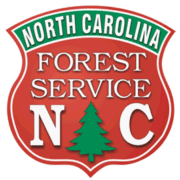KTCOG Hosting Family Caregiver Conference Aug. 6; Focus On Dementia Care
The Kerr Tar Family Caregiver Conference is scheduled for Tuesday, Aug. 6 and registration is now open for family caregivers and professionals who are interested in learning about caring for individuals with dementia.
The half-day conference begins at 9 a.m. with check-in, breakfast and networking at the Vance-Granville Community College Civic Center Auditorium.
The conference is presented by Dementia Alliance of North Carolina. Melanie Bunn, a registered nurse and dementia care specialist with the alliance, is one of the speakers along with Michael Patterson, KTCOG’s family caregiver specialist.
Family caregivers can register for $10; professional caregivers register for $25 and have the opportunity to earn three continuing education unit credits.
Visit www.DementiaNC.org/2024Henderson to register online or contact Lisa Levine at 919.832.3732 to register by phone. Walk-in registrations are welcome on the day of the conference.
Visit www.kerrtarcog.org to find out about all the programs and services the KTCOG provides across Vance, Granville, Warren, Franklin and Person counties.







